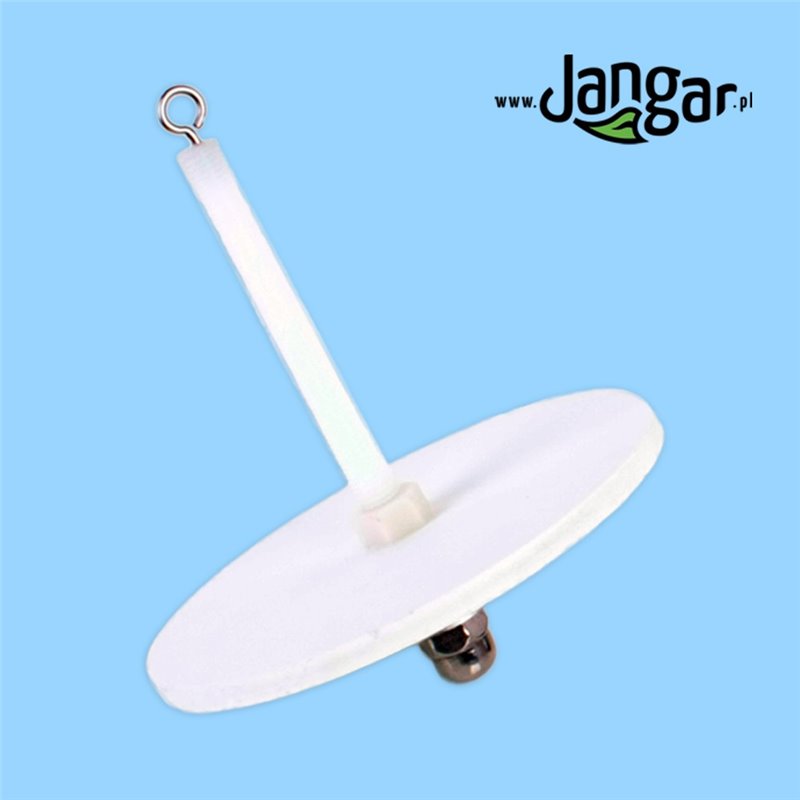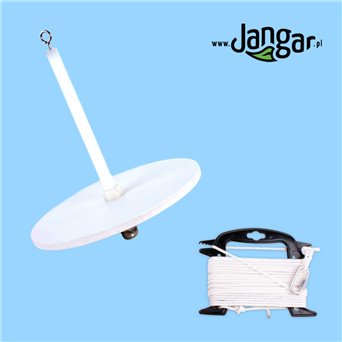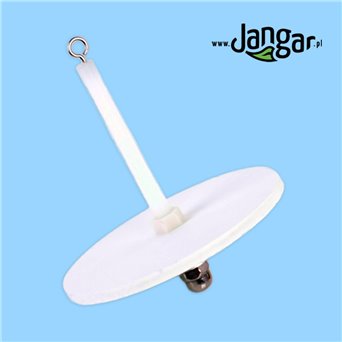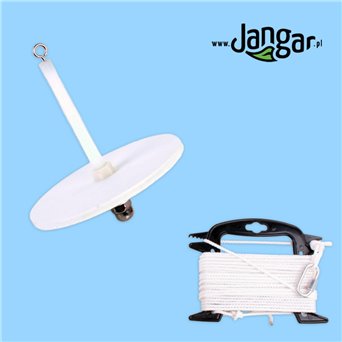Secchi Disc, white, version M
Product reference: Bad000312
Tax incl.: zł171.00
Description
Secchi disc with a diameter of 240 mm for determining the depth of visibility and light permeability of water (called also as transparency of water and light penetration). It is made of durable, white plastic 10 mm thick, additionally equipped with a cylinder-shaped stainless steel weight (50 mm diameter) for better lowering and a high rod ended with a stainless steel eyelet to hook the line (line to be purchased separately). The disk is made of white, sturdy plastic and stainless steel. Overall dimensions: diameter 24 cm; height 28,5 cm.
What is the use of Secchi disk?
The Secchi disk is a tool used to measure water transparency or clarity in bodies of water. It consists of a circular disk, typically painted with alternating black and white quadrants or simply white, which is lowered into the water until it becomes invisible. The depth at which the disk disappears from view is known as the Secchi depth and is used as an indicator of water transparency.
The procedure for using the Secchi disk is as follows:
-
Choose a location on the water body that is representative of the area you want to measure. Avoid areas near the shore or where the water may be influenced by factors such as sedimentation or human activity.
-
Attach a long line or rope to the Secchi disk to allow for lowering and retrieval.
-
Lower the disk slowly into the water, avoiding splashing or disturbances that may affect visibility. The disk should be lowered vertically, allowing it to sink freely.
-
Continue lowering the disk until it disappears from view. Take note of the depth at which the disk is no longer visible. This is the Secchi depth.
-
Slowly raise the disk back to the surface while maintaining a steady pace. Note the depth at which the disk reappears. This is also important for analysis and comparison.
The Secchi disk is primarily used in limnology and oceanography to assess water quality, light penetration, and the presence of suspended particles or algae. It provides a simple and cost-effective method for estimating water transparency, which can be an important parameter for understanding ecosystem health and ecological processes.
It's worth noting that factors such as weather conditions, time of day, and the presence of sediments or algae can affect the accuracy of the measurements. Therefore, consistent measurement protocols and proper calibration of the disk are essential for reliable and comparable results.
Product Details
You might also like












































































































































































































































































































































